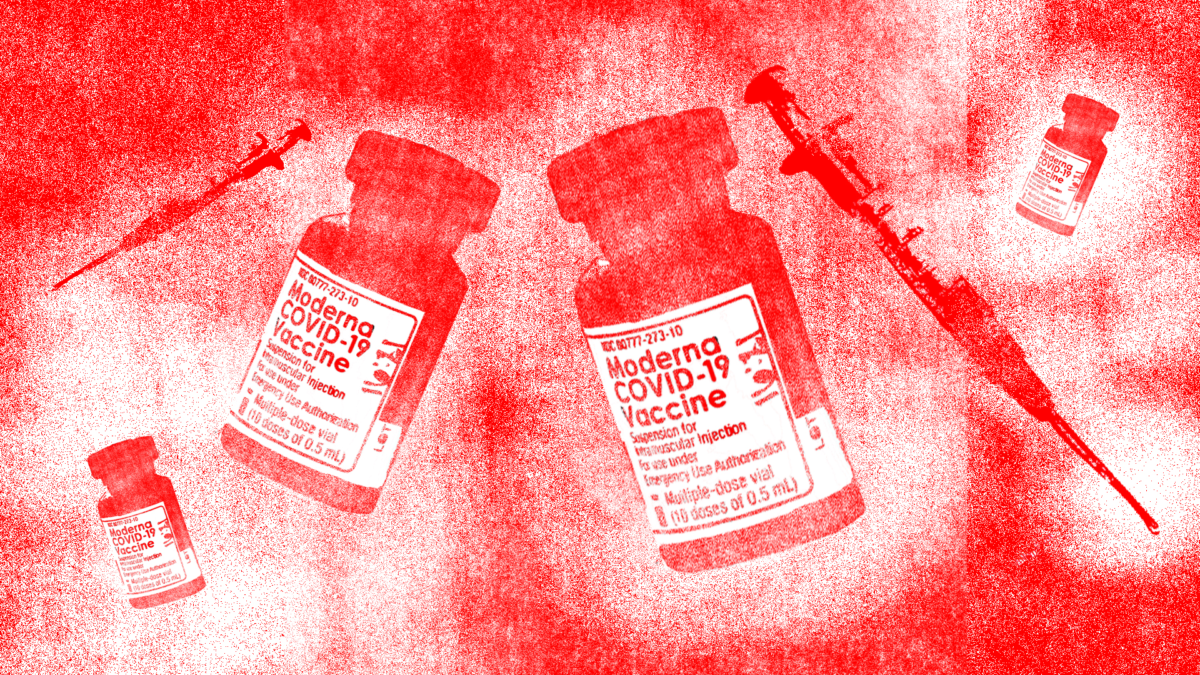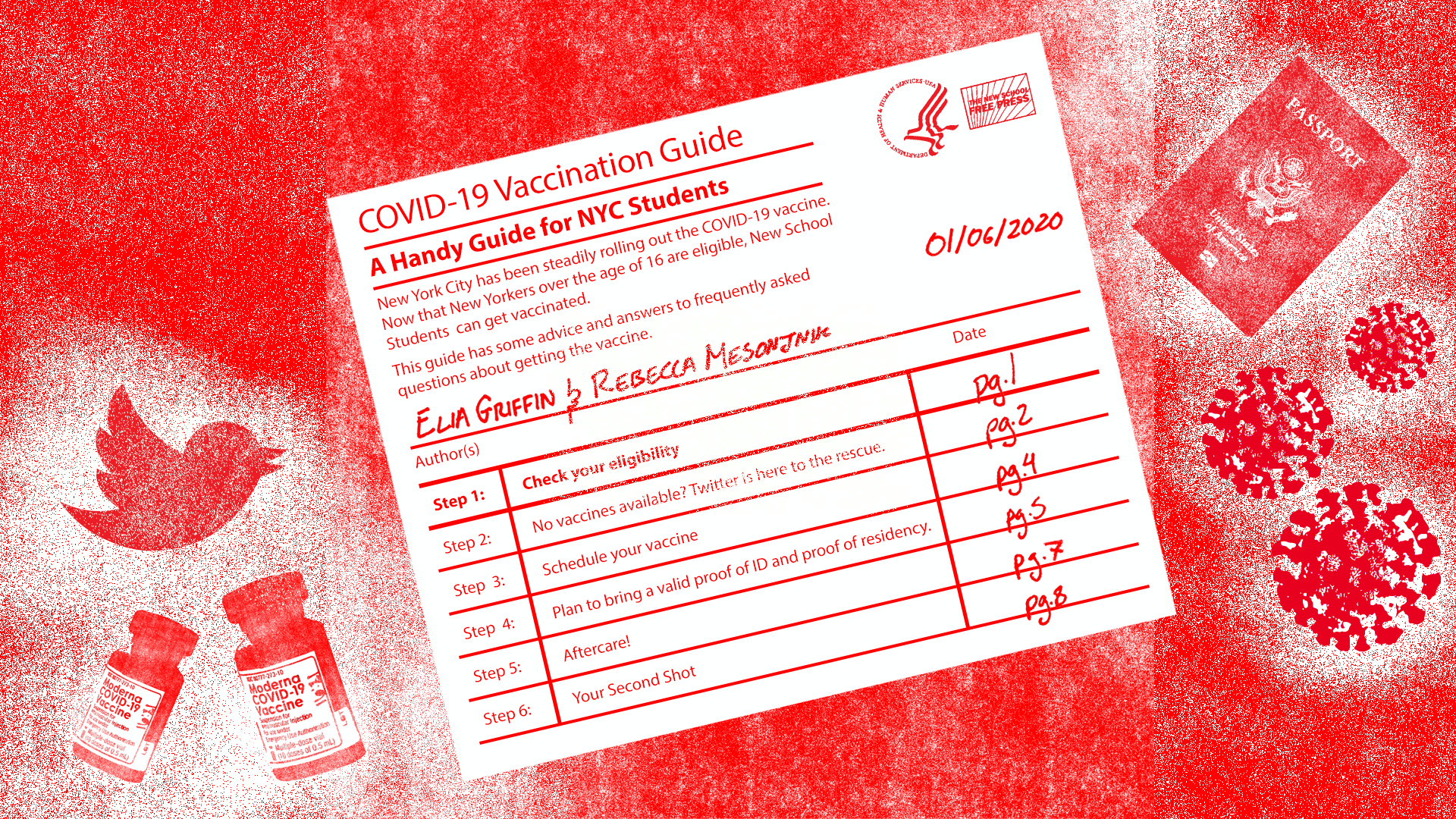New York City has been steadily rolling out the COVID-19 vaccine. Now that New Yorkers over the age of 16 are eligible, New School Students can get vaccinated. This guide has some advice and answers to frequently asked questions about getting the vaccine.
How to Schedule Your Vaccine Appointment:
Step 1: Check your eligibility
As of Tuesday April 6, everyone in New York State over the age of 16 is eligible for the vaccine. Use the New York City Vaccine Finder to check your eligibility and check for available vaccine appointments.
You can also call the New York State COVID-19 vaccine hotline at 1-833-697-4829
Step 2: No vaccines available? Twitter is here to the rescue.
If you are having a difficult time scheduling an appointment or remembering to check the vaccination websites, have no fear, Twitter is here!
There are multiple vaccine Twitter accounts based in New York City that post available vaccine appointments at various locations across the five boroughs. These accounts are run by real people and bots.
Here are some accounts to follow on Twitter:
Turn on the notifications of these Twitter accounts to get the most recent vaccination appointment updates.
And check out these websites to find vaccine appointments:
Step 3: Schedule your vaccine
Schedule your covid vaccine appointment using the NYC COVID-19 vaccine finder, the NYS COVID vaccine finder or aforementioned sources.

Step 4: Plan to bring a valid proof of ID and proof of residency.
International students can get the vaccine too!
According to the New York City Department of Health website a valid form of ID can include:
- Driver’s license or non-driver ID
- IDNYC
- Birth certificate issued by a state or local government
- Current U.S passport or valid foreign passport
- Permanent resident card
- Certificate of Naturalization or Citizenship
Proof of residency may include either one of the following:
- State or government-issued ID
- Statement from landlord
- Current rent receipt or lease
OR Two of the following:
- Statement from another person
- Current mail
- School records
Step 5: Aftercare!
Drink plenty of water and keep in mind that you may experience side-effects like muscle aches, or a slight fever. The U.S. Centers for Disease Control and Prevention says that side effects for the vaccine include:
- Tiredness
- Headache
- Muscle pain
- Chills
- Fever
- Nausea
- Pain
- Redness
- Swelling
However, you might not experience any side effects at all!
Step 6: Your Second Shot
The CDC also says that “side effects after your second shot may be more intense than the ones you experienced after your first shot.These side effects are normal signs that your body is building protection and should go away within a few days.”
If you are getting the Pfizer or Moderna vaccine, remember to schedule your second shot. Some providers will automatically schedule one for you. You are fully protected two weeks after your second shot but remember, even with the vaccine there is still a risk of contracting and spreading COVID-19, and immunity only lasts for three to six months. Continue to wear masks when out in public and when around those who are unvaccinated.







